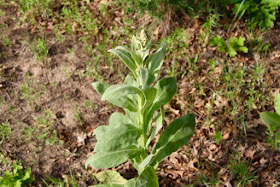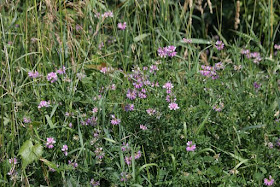 |
| Sunrise River flows into the St. Croix
Photo by J. Harrington
|
Then again, some of the more interesting and creative people I know of are tackling the question of Fostering A Water Ethic. The Center for Humans and Nature, in Chicago, has made available on line "3 Videos, 3 Articles, 3 Responses, & 3 Blog Posts" that "highlight the many ways we can mindfully reimagine our relationship with and governance of the life-giving gift of water." In the highly improbable event that Governor Dayton ever reads this blog, I hope he makes time to look at the Fostering material. I think he'll enjoy it, especially the photography. As I've explored the contents myself, they've caused me to forego my usual cynicism and to think harder and, hopefully, more creatively about what I can do to make Minnesota's Water Ethic viable and successful. With hard work and luck, it might become as successful as was Dune. We need something like that.
 |
| The St. Croix and Minnesota flow to the Mississippi's Lake Pepin
Photo by J. Harrington
|
We can't continue to rely on government and regulations to protect us from ourselves. Flint Michigan's potable water failures are but one example of that. The Minnesota Center for Environmental Advocacy informs us that the Minnesota Court of Appeals found that Metro Council can increase its phosphorus discharge to Lake Pepin despite the abysmally slow progress on reducing agricultural pollution, a major (the major?) contributor to algae blooms in the lake. If Minnesota's farmers don't clean up their act, Lake Pepin and many of Minnesota's other wonderful water resources will become essentially useless. Right now 40% of our waters aren't fit for fishing and swimming. Stay tuned for musings about how we can connect some of those dots. We remain awash in our own waste.
Awash
By Brian Russell
the unthinkable prospectof a world in which I am leftto my own deviceswhich are few and as soonas the batteries die uselessfirst order of businessI draw a map in the sandmark where I stand as the capitalof civilization within me thedetailed blueprints of the pyramidsand the concept of zerobeyond me the finite frontierthe many miles of undevelopedshoreline with spectacular views of asea filled with intricately depictedmonsters I have a lot to do beforeI introduce the new worldto art and astronomy and industrymedicine and technologyethics politics democracyby a show of hands we shall electwhich tree to burn in the first fire
********************************************
Thanks for visiting. Come again when you can.
Please be kind to each other while you can.





















